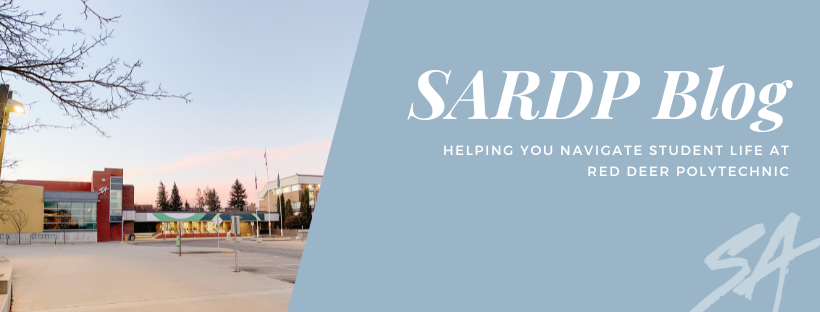Top 5 Tips for First-Time Renters
By Jamie Smith, Staff Lawyer, Central Alberta Community Legal Clinic
This post is for informational purposes only and should not be construed as legal advice specific to any individual situation.
Going to post-secondary is one of the most exciting experiences, and sometimes one of the most daunting challenges, that a person can have. Lots of students are moving away from their childhood home for the first time, and whether it’s in a dorm room or an off-campus rental, it’s important to know the ins-and-outs of renting for the first time. Here are my Top 5 Tips for First Time Renters:
- Read the Rules, Read Your Lease, Know Your Rights
Virtually every renter will have a lease agreement with their landlord, which is a binding legal contract. Not being offered a lease agreement is often a red flag, so be cautious if there is no paperwork to back up your living arrangements, because without a lease, it’s very hard to show your rights as a tenant.
In Alberta, there are 2 types of lease agreements: those that are for a single room rental in someone else’s home (or a dormitory), and those that are for a private suite/apartment/home. If it’s the latter, it likely falls under the Residential Tenancies Act, and that legislation provides basic rights to both the landlord and the tenant. Some basic things to pay attention to include:
- Start date
- End date (if any)
- Rental rate
- Which utilities, if any, are included
- Other costs no included in rent (utilities, parking, condominium fees).
Many leases are for a 12-month period, although some landlords offer shorter terms for 6 or 8 months, or even month-to-month without a fixed end date. Every lease is different, so you’ll want to read carefully, and also read any additional rules that may apply to your lease. For example, most leases include rules about having pets, about the number of people who can live in a space, or about how long guests can stay for. House rentals will also often include terms about caring for lawns or sidewalks. If you have the opportunity, ALWAYS read your lease before you sign, and ask questions about anything you don’t understand or need clarity on. Making assumptions frequently leads to misunderstanding and potential legal issues later on. If at all possible, try to view the property you are renting in advance as well so you know that the property you’re hoping to move into matches what you’ve read about or seen online; too good to be true sometimes is! Lastly, take the time to become familiar with your rights – the Residential Tenancies Act is available online, and there are lots of resources available to help clarify what a landlord and a tenant can do!
- Walk In, Walk Out
In Alberta, a landlord and tenant have a duty to inspect a rental property within one week of the tenant taking possession, and within a week of giving up possession, of a rental. This is an opportunity to confirm that the rental is suitable for the renter, that there are no major deficiencies, and to ensure that it’s in a good state of repair. It’s important not to rush through an inspection when you’re taking possession, as you’ll want to catch any problems. Common things to watch for include:
- Any holes (nails or otherwise) in walls
- Any stains or other damage to flooring
- Any issues with doors and windows (opening/closing, breakage, etc.)
- Any odors (cigarette, pets, etc.)
- Any issues with cleanliness – check the kitchen and the bathroom specifically.
Most inspection reports have a scale, but also be sure to note on the report specific issues. You will want to ensure that the property is in the same or better condition when you move out to avoid losing your security deposit.
- A Picture Is Worth A Thousand Words
Just as the old saying goes, a picture can tell a story. It’s recommended that a renter takes photos of the property on the day they move in (with time and date stamp if you can!) to show the state of repair of the property at the time you move in. All of those issues that you may have noted on the walk-in inspection should be photographed, if you’re able, and consider photos from both a close up (for detail) and further back (to provide context to the picture you’re taking). If you have these sorts of photos, and a landlord is trying to blame property damage on the tenant, it’s much easier to show the condition of a property with photos than it is to discuss the size of something like a hole or a stain. Perhaps even more importantly, if you’re ever taken to court for damages or need to convince a judge to give your security deposit back, your photos are going to be great evidence.
- Communicate with Your Landlord
Miscommunication, or a lack of communication, is one of the top reasons for legal disputes, and tenancy matters are no exception. From the time that you start looking for a rental, to the day you get your damage deposit back and you move along to your next rental, be sure to have good communication with your landlord. Ask them questions about the property, about the lease, and about the rules they have in place; provide them with updates if something in the unit is accidentally damaged, or needs repair; give your landlord the opportunity to give you an exception to a rule if you need it, rather than assuming that breaking the rule will be no big deal, or that you won’t get caught. People who understand each other, and understand boundaries, are much more likely to get along than those who communicate poorly. It’s also HIGHLY recommended to keep things in writing – text messages or emails are much easier to rely on than the memories of two people who might have their own agendas.
- Paws, Claws, Leashes, and Leases
Thinking about getting a pet, or moving your pet into your new rental space? Read your lease first, and educate yourself as much as you can. I cannot count the number of landlord and tenant disputes that have cropped up because a tenant either ignores a “no pets” rule in a lease or has not followed the requirements that a landlord has set out regarding pets. In Alberta, tenants do not have the express right to have pets, meaning it is completely at the landlord’s discretion. Landlords may choose to charge additional monthly and/or one-time pet fees, and there are no rules with respect to how much this can be. The rules that can be set by a landlord can also be completely arbitrary, so ensure that you know that your fluffy (scaled or feathered) friend is going to be welcome before you sign your lease or adopt a new bestie.
Support animals are also a somewhat misunderstood area of the law. A true service dog or guide dog under Alberta law is allowed any place that is open to the public (including rentals), however, these animals require specialized training through an approved organization, and the individual must obtain a Qualified Service Dog Identification card – you can ask your doctor about the possibility of obtaining a service animal. If a tenant has obtained both an ID card and a qualified service dog, they should not be discriminated against by a landlord when trying to obtain a rental unit. Unfortunately, not every person who wants a service dog will qualify for one, so if having an animal in your space is important, seeking out accommodations that allow for them may be an important step.
There is a lot of information available about renting, and how to approach concerns or issues with a landlord or a rental property. If you’re new to the province, keep in mind that there are different laws in every province regarding tenants and their rights and responsibilities. If you need help, consider reaching out to one of the legal clinics in Alberta.

